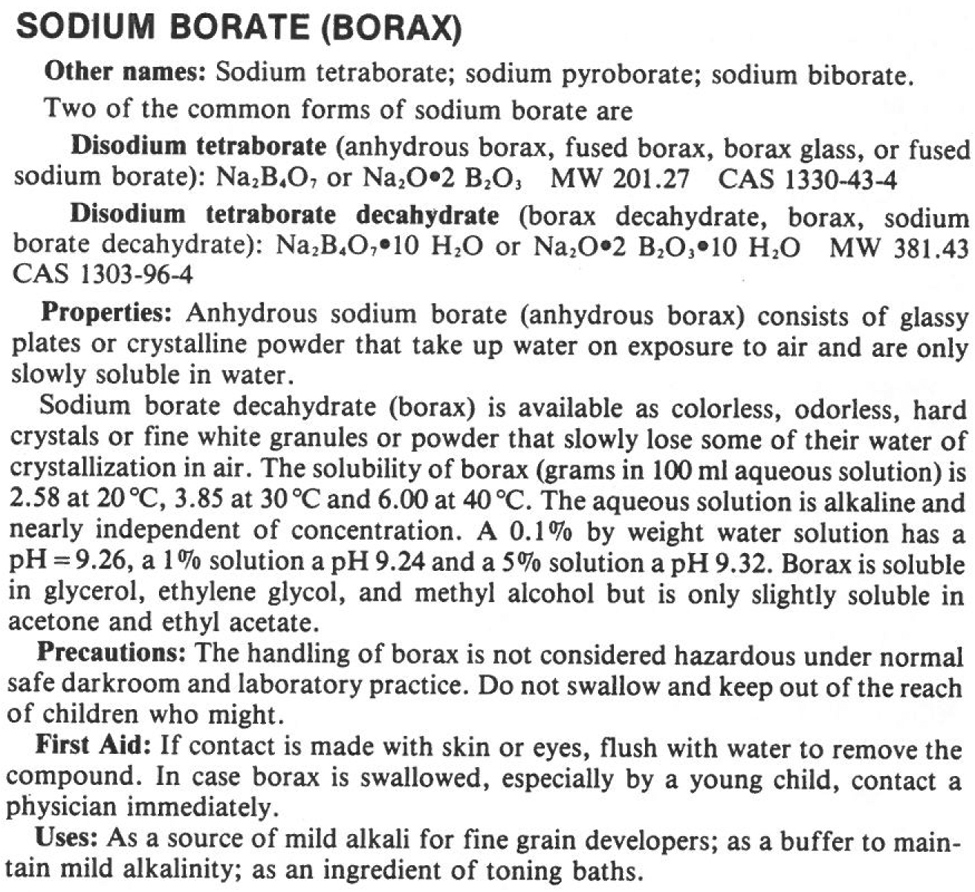
Here is what the Photo-Lab Index from Morgan & Morgan has to say about it:

Borax, given the E number E285, is used as a food additive, but is banned in some countries, including the United States, China,[31] and Thailand. As a consequence, certain foods, such as caviar, produced for sale in the United States contain higher levels of salt to assist preservation.[32] In addition to its use as a preservative, borax imparts a firm, rubbery texture to food. In China, borax (Chinese: 硼砂; pinyin: péng shā or Chinese: 月石; pinyin: yuè shí) has been found in foods including wheat and rice noodles named; lamian, shahe fen, kway teow, and chee cheong fun.[33] In Indonesia, it is a common, but forbidden, additive to such foods as noodles, bakso (meatballs), and steamed rice. The country's Directorate of Consumer Protection warns of the risk of liver cancer with high consumption over a period of five to ten years.[34]